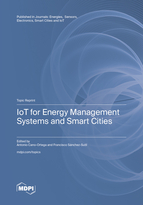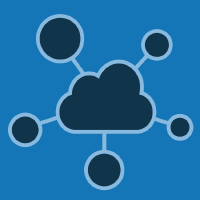Topic Menu
► Topic MenuTopic Editors


IoT for Energy Management Systems and Smart Cities

A printed edition is available here.
Topic Information
Dear Colleagues,
Smart cities represent a great advance in terms of sustainability, energy efficiency, and being able to respond to the needs of enterprises, institutions, and inhabitants.
In this sense, smart grids contribute to the development of smart cities in the field of electrical energy, including concepts such as renewable energies, distributed generation, energy efficiency, and smart homes and automation.
In order to be able to implement all the functionalities of smart grids, it is necessary to have real-time information on the different installations. In this sense, IoT plays a fundamental role in developing smart grids.
Cloud computing, which integrates the data obtained with smart electrical meters, smart electrical power analyzers, and other intelligent metering devices, contributes to the availability of the measured data in real time and provides intelligence to existing electrical networks.
Wireless communication networks, especially LPWAN, allow the construction of devices with low energy consumption and high operating autonomy, which can be installed in different locations even with difficult access.
The massive implantation of the electric vehicle implies the construction of charging stations. These stations must use renewable energy sources that contribute to saving fossil fuels, reducing CO2, and increasing the sustainability of electric mobility.
Hybrid storage systems, together with renewable energies, constitute new development systems, in which it is necessary to measure electrical variables and control the operation of the system.
Prof. Dr. Antonio Cano-Ortega
Prof. Dr. Francisco Sánchez-Sutil
Topic Editors
Keywords
- cloud computing
- smart electric meters
- smart power analyzers
- smart grids for smart cities
- smart home and automation
- monitoring and control renewable energy
- public lighting system
- distributed generation
- hybrid electric energy storage systems
- electric vehicle charging stations
- wireless technologies
Participating Journals
| Journal Name | Impact Factor | CiteScore | Launched Year | First Decision (median) | APC |
|---|---|---|---|---|---|

Energies
|
3.2 | 5.5 | 2008 | 16.1 Days | CHF 2600 |

Sensors
|
3.9 | 6.8 | 2001 | 17 Days | CHF 2600 |

Electronics
|
2.9 | 4.7 | 2012 | 15.6 Days | CHF 2400 |

Smart Cities
|
6.4 | 8.5 | 2018 | 20.2 Days | CHF 2000 |

IoT
|
- | 5.2 | 2020 | 23.3 Days | CHF 1200 |

MDPI Topics is cooperating with Preprints.org and has built a direct connection between MDPI journals and Preprints.org. Authors are encouraged to enjoy the benefits by posting a preprint at Preprints.org prior to publication:
- Immediately share your ideas ahead of publication and establish your research priority;
- Protect your idea from being stolen with this time-stamped preprint article;
- Enhance the exposure and impact of your research;
- Receive feedback from your peers in advance;
- Have it indexed in Web of Science (Preprint Citation Index), Google Scholar, Crossref, SHARE, PrePubMed, Scilit and Europe PMC.

